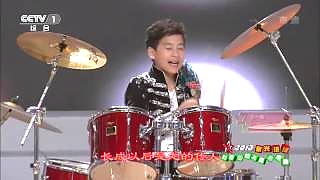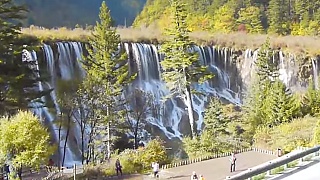At root, narcissism ('life is all about me') is self-loathing projected onto someone else (the scapegoat, who might be driven to death - through illness, madness, suicide; let's call it what it is - emotional torture; in contrast, all others are shown a completely opposite, OTT, 'lovely' persona; and many will be deceived by this).
Narcissism is very destructive; and not often recognized.
This is not a rare thing; it could well be 1 in 5 people.
Don't miss this; Dr. Ramani is awesome.
Ramani Durvasula in conversation with Lewis Howes ...
[640],shadow=true,start=,stop=Narcissistic fathers and the damage they do to their children ...
Narcissistic mothers and the damage they do to their children ...
[320],shadow=true,start=,stop=Narcissism and society ...
[320],shadow=true,start=,stop=On how a narcissist will try to destroy you ...
[320],shadow=true,start=,stop= [320],shadow=true,start=,stop=Is your depression a symptom of being in a narcissistic relationship?
[320],shadow=true,start=,stop=Relationships need some work, including self-reflection; but they shouldn't be hard work - that's a sign it might never work out; if one feels a need to be treading on egg shells, that's confirmation it is doomed. Real relationships are based on mutual respect, flexibility and compassion (unconditional love - no ifs or buts)*; narcissists have none of these attributes.
In a time of stress, does the other stay positive and chip in, or start a blame game? Things like this are the signs to look out for. Does the other help you reach your dreams, or belittle you ? Are they present in the moment or in their own little bubble ? A narcissist can't stand your success or happiness.
Psychopathologies are all about distortions between reality and self, between inner self and behavior. When there is the absence of such distortions - masks, projections, defense mechanisms, etc., there is authenticity. That's going from acting, to really living.
* without needing that person, or allowing oneself to be walked upon. One must be at least somewhat authentic / love oneself first; not trying to complete oneself, etc.
 Something different – more about narcissism (psychology)
Something different – more about narcissism (psychology)






















![Top videographers - bjKina, AnyuXu and DearNessie - take you on a tour of Beijing ... First song : Going Home by Faye Wong, from the album To Love, 2003. Note : highly addictive music straight ahead ... A fantastic video film by AnYu Xu ... Includes a great hyperlapse along Beijing`s south-north axis, from [TianTan, the Temple of Heaven], QianMen, through Tian`AnMen, GuGong (`Old Palace`, the `Forbidden City` / Palace Museum), JingShan Park, the Drum and Bell Towers and onto the Olympic Park and Olympic Forest Park ... New (old) BeiJing - fashion, food and the vibe, with DearNessie. A vlogging masterclass - `show don`t tell`; plus deft editing and great music ... The beautiful, blue sky city of BeiJing 北京](https://www.beijingbuzzz.com/kk137.jpg)
![[May 15th 2017] Heat-wave ahead ! Summer is hotting up in BeiJing this week - into the high 30s C (90s F in old money). Keep cool (keep hydrated), be cool (sensible, giving and creative), keep in touch (we love your feedback and input), and above all - love life (live more; BE love) ... Like our site ? - help us with a donation. Something to share ? - your own film or something you like - let us know ! To have and to be - huh ? The two big verbs - to have and to be ... Thinking through this seemingly abstract concept could change your life, for the better. Two very different ways to live; or rather - really live or not really live. To have is good, to a point; but can be a holding onto more than we really need, and a baggage of the past dragged into the future that prevents us living in the real now. For what we `have` is not just physical stuff - it is also the clutter and beliefs in our mind. To be, is to live, free of the past and all that we `have` (and `know`). Live more ... be more ... Listen less (to others and beliefs), and look more (and think more, based on what is, not on what you have heard). Someone once said that to love is much better than to be loved; to give so much better than to receive (have); and so it is with to have and to be ... To be is the way. Everything taken, comes to an end. Everything given ripples through time for an eternity. To ask for nothing, and give all - that is love. To be, not to have. ~~~ You might like to read Erich Fromm`s To Have or To Be, and The Art of Love, which also explore this concept, and is essentially what the Buddha told us. Easy read; concise and potent. Also good reading : Jiddhu Krishnamurthi - for example, Commentaries on Living (three easy read volumes), and Alan Watts - for example, The Way of Zen. Blue sky BeiJing 北京](https://www.beijingbuzzz.com/bb146.jpg)






